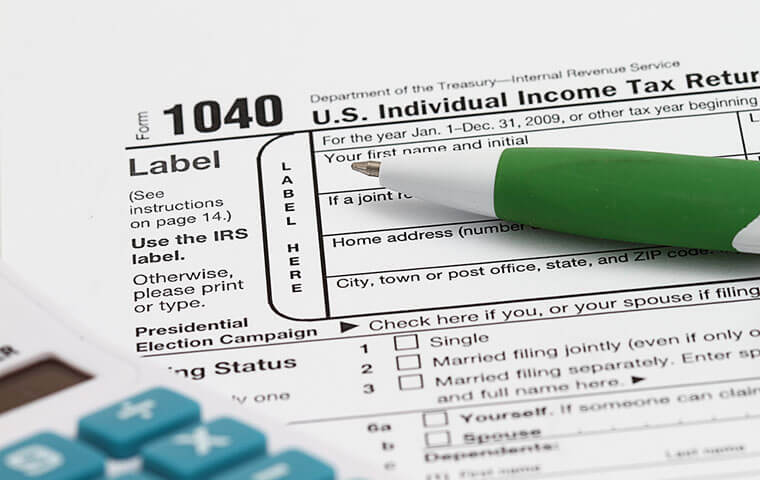 Congress changed the way your annuity is taxed, but it didn’t change the way that OPM pays your annuity. Image: RAGMA IMAGES/Shutterstock.com
By: Reg Jones
Congress changed the way your annuity is taxed, but it didn’t change the way that OPM pays your annuity. Image: RAGMA IMAGES/Shutterstock.com
By: Reg JonesThere’s a lot of confusion about how a federal employee’s annuity is treated when it comes to federal taxes. Years ago, the rules were simple. The tax code held that the retirement contributions deducted from your pay would be tax free when you retired and began receiving an annuity.
The logic behind that was this. Those dollars had already been taxed when they were earned. Only after those taxed dollars ran out – usually around 18 months – would you begin receiving the government’s money. And the government’s money was 100 percent taxable.
That changed on July 1, 1986, when Congress revised the law so that the tax-free portion of your annuity would be determined by your life expectancy at the time you retired. As a result, only a small proportion of your annuity would be tax-free, and the rest would be taxable. Bummer!
The younger you were when you retired, the longer it would take to fully recover your contributions, which could exceed 30 years. Realizing that you might not live long enough to recover all your contributions, the law specified that if you died before the tax-free portion was returned to you, it would be passed on to your spouse—but only if he or she was entitled to a survivor annuity.
Not satisfied with their meddling up to this point, the Congress once again changed the tax code to factor in the age of the spouse at the time of retirement. That further stretched out the time needed to fully recover your tax-free contributions to the retirement fund. For those of you who are keeping score, that change was effective for federal employees retiring after November 18, 1996.
Any contributions that weren’t paid out to you when you died (or to a spouse for whom a survivor annuity was elected) would be paid as a lump-sum death benefit according to the statutory Order of Precedence:
• To the widow(er); if none,
• to the child or children (in equal shares); if none,
• to the parent or parents (in equal shares); if none,
• to the duly appointed executor or administrator of the estate; if none,
• to the next of kin under the laws of domicile at the time of death.
To determine when a death benefit is due, OPM compares the gross amount it expended in annuity payments with the contributions you paid into the retirement fund while you were an employee. When the tax code was changed, it did not alter that process. The only thing that changed was the way your annuity would be taxed.
In other words, while Congress changed the way your annuity is taxed, it didn’t change the way that OPM pays your annuity. As it has always done, OPM will return your contributions first. Only when that money runs out will you begin receiving the government’s money. Since the amount you contributed will run out fairly quickly, the tax-free portion of your spouse’s survivor annuity or the tax-free refund to your heirs will be far less than they might have expected.
For example, if you contributed $50,000 to the Fund and received $50,000 or more back in annuity payments before dying and didn’t have a survivor spouse, no death benefit would be due. This is true even though you may have only received a portion of that amount tax-free before dying. To deal with this problem, the tax code provides that a deduction of the unrecovered tax-free portion of retirement contributions may be claimed on your final tax return as a miscellaneous itemized deduction. As such, it is not subject to the adjusted-gross-income limit.
Note: If the unrecovered balance is passed on through a survivor annuity and then the survivor dies before the full tax-free amount has been recovered, the unrecovered portion may be claimed on the survivor’s final tax return.
Once again, bummer!
Former head of retirement and insurance policy at the Office of Personnel Management, and longtime FEDweek contributor, Reg Jones is known throughout the federal workforce community as an authority on pay and benefits.
Agency RIFs, Reorganizations Starting to Take Shape
Order Formally Launches ‘Schedule Policy/Career,’ Adds Category of Appointees
Top 10 Provisions in the Big Beautiful Bill of Interest to Federal Employees
A Pre-RIF Checklist for Every Federal Employee, From a Federal Employment Attorney
Work Longer or Take the FERS Supplement Now: Which is Better?
See also
Alternative Federal Retirement Options; With Chart
Primer: Early out, buyout, reduction in force (RIF)
Retention Standing, ‘Bump and Retreat’ and More: Report Outlines RIF Process

